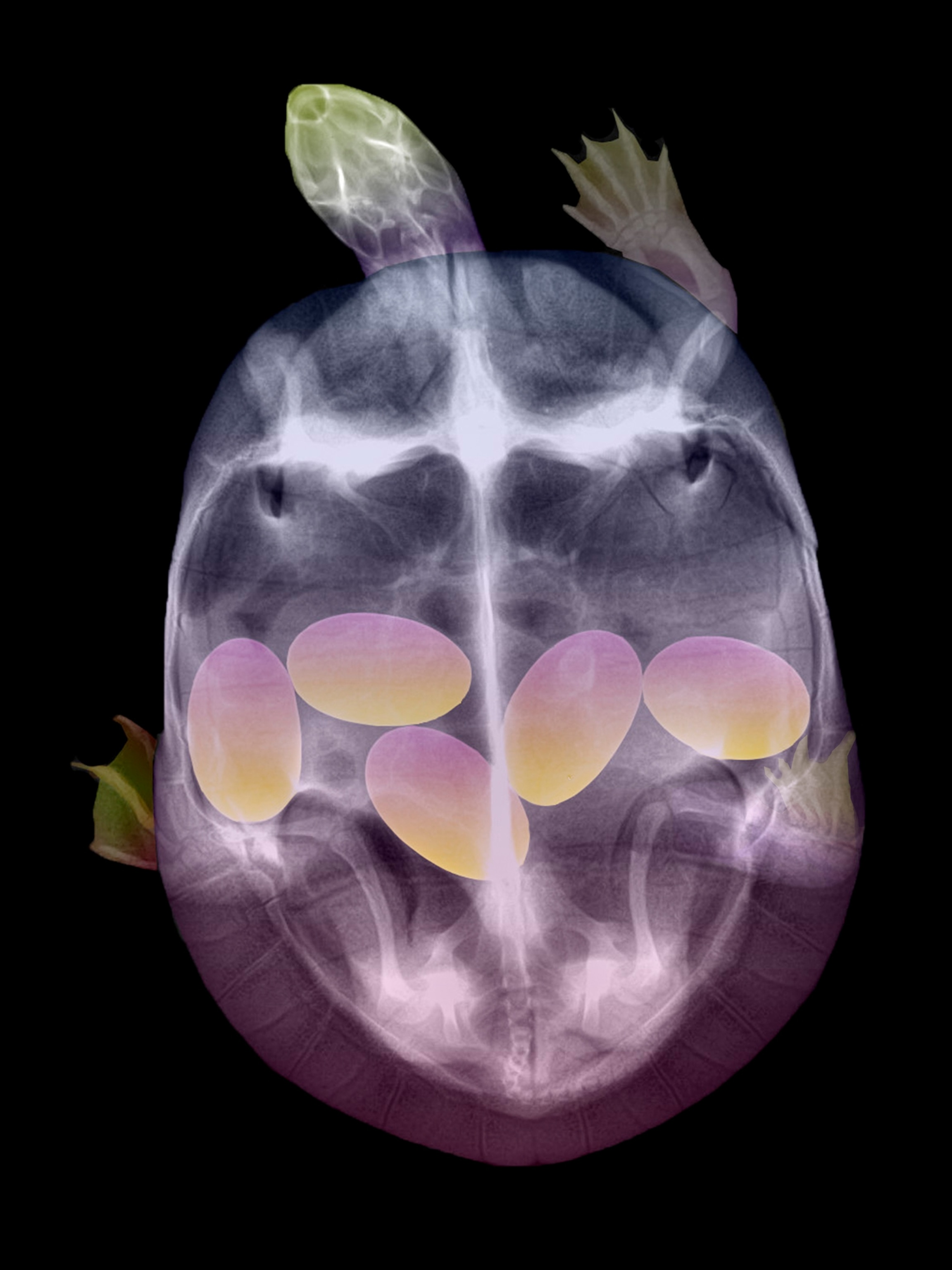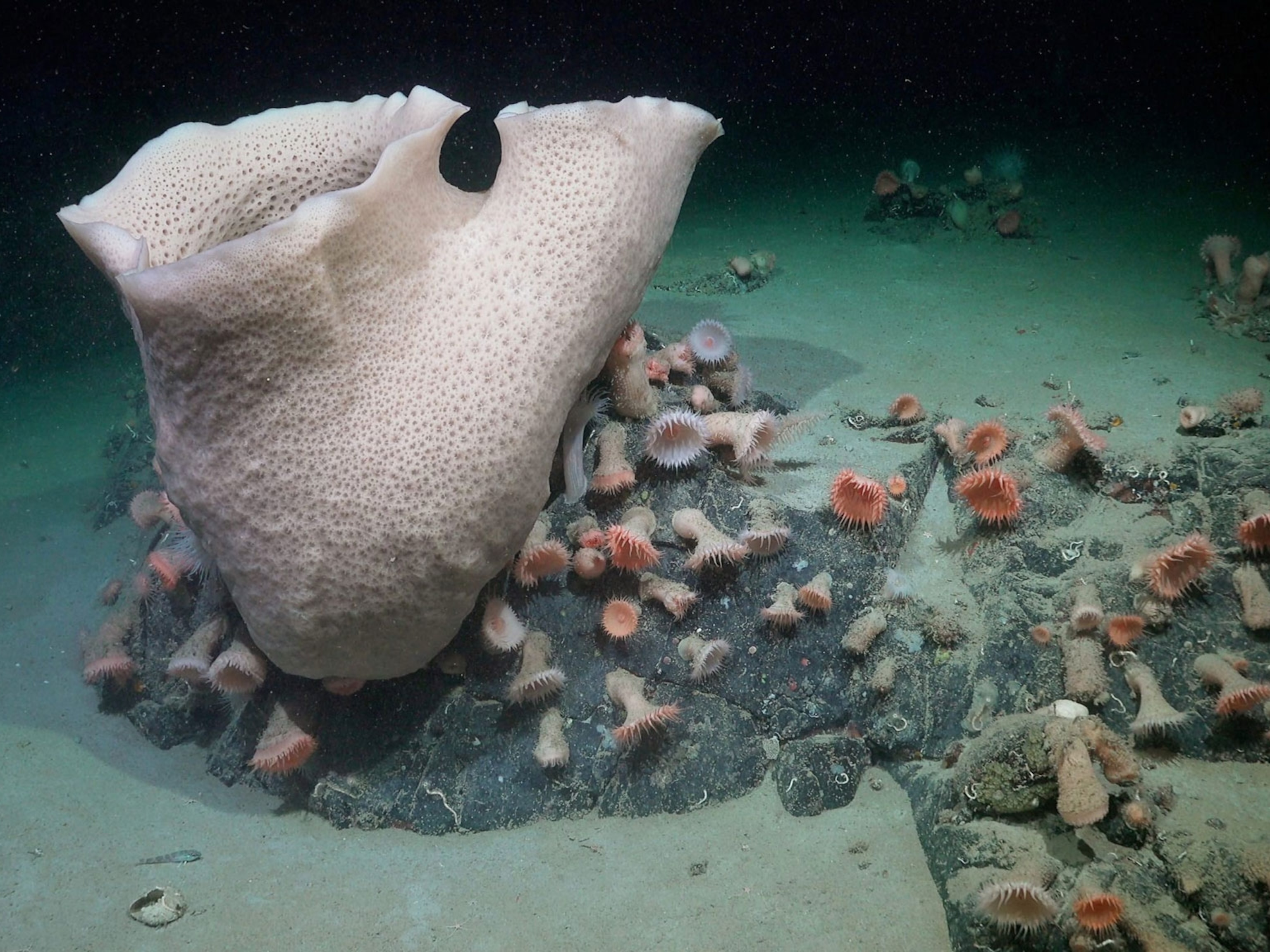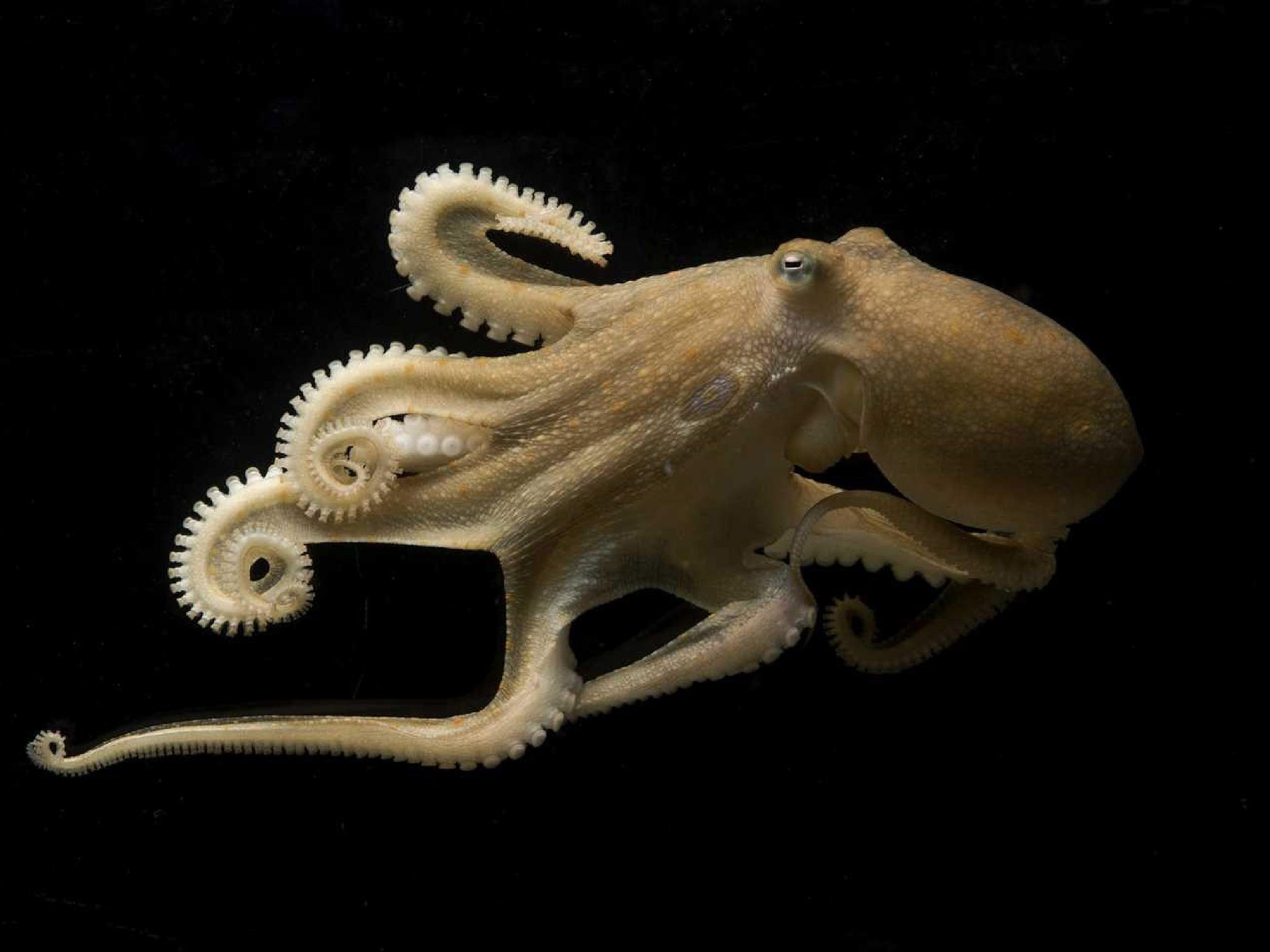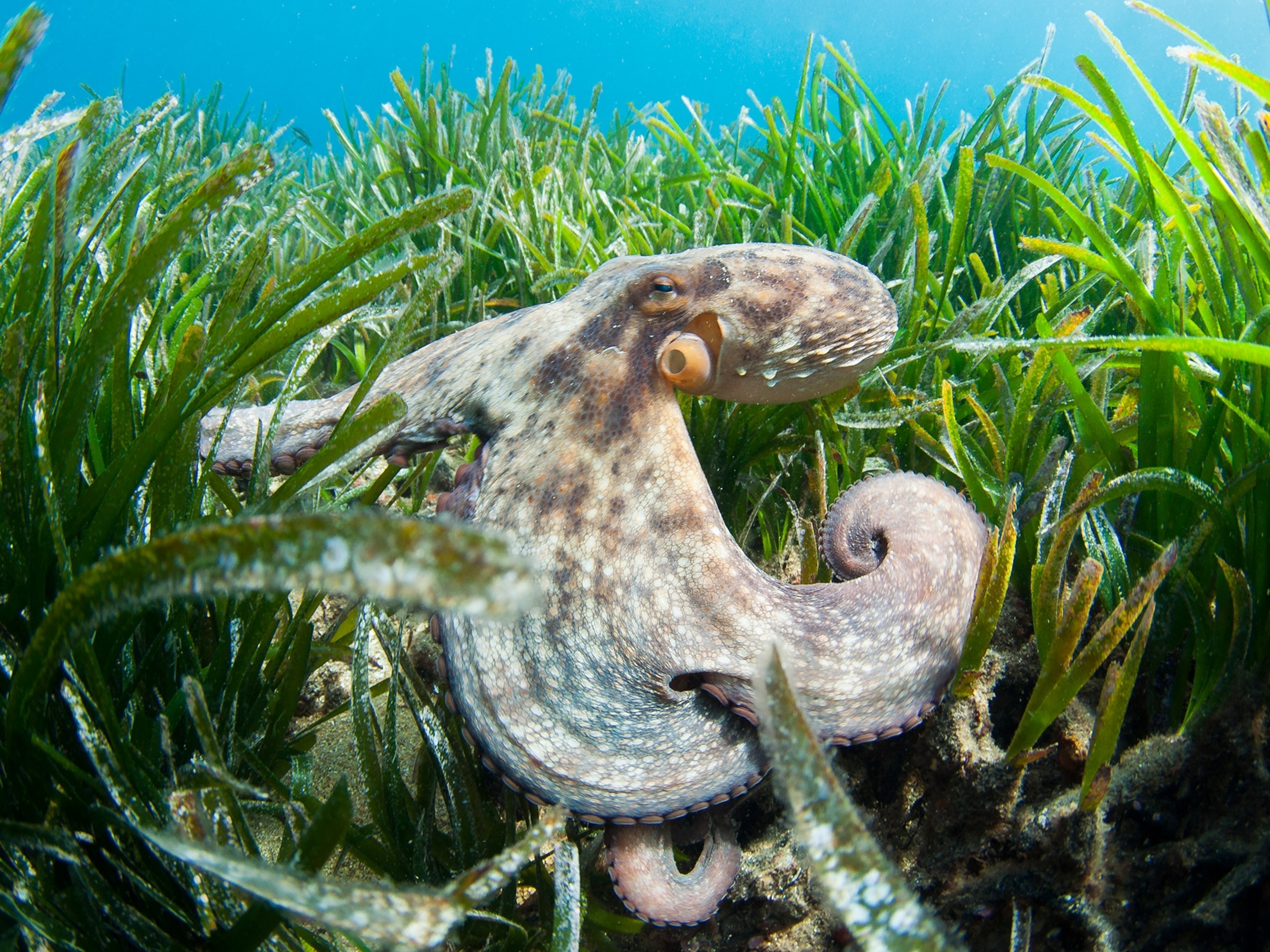
Parakeet mobs, octopus moves, and other curious phenomena
As cities contend with flocks of invasive species, scientists learn from octopuses’ limber limbs and develop ethereally lightweight solar cells.
This story appears in the April 2021 issue of National Geographic magazine.
The parakeet problem
It seems incongruous: fluorescent-green tropical birds totally at home in a park in Hesse, Germany (pictured, above). Are they fugitives from a tearoom or a pirate ship? No—just opportunistic avians that escaped or were released into the wild and quickly multiplied.
Rose-ringed parakeets, native to South Asia, were sold as pets until trade in wild birds was banned in the U.S. and Europe. Now they and monk parakeets have gone from pet to pest in Hawaii, California, and Florida, as well as in Europe (where rose-ringed parakeets number more than 85,000) and the Middle East. “They are very lousy pets, to be honest,” says Assaf Shwartz, a conservation biologist in Haifa, Israel. “They’re noisy; they bite. Owners get tired after a while.” They destroy crops, menace native birds, and are displacing a threatened bat species in Spain. Monk parakeets’ bulky nests on utility lines have caused power outages.
Eradication campaigns in the Canary Islands and the Seychelles have paired the trapping and shooting of invasives with advocacy in communities to promote native bird species. Still, any effort to thin the parakeet population can be controversial. After all, says British biodiversity conservationist Jim Groombridge, “people love parrots.”
—Amy Alipio
Scientists learn from octopus arm movements
It’s one thing to marvel at an octopus’s flexibility, and another to quantify it. Marine Biological Lab researchers watched 10 wild-caught octopuses attempt various tasks for two hours—and counted a total of 16,563 arm movements. Studying the mollusks’ moves could help engineers design versatile, strong “soft robotic” arms for use in dangerous rubble inspections or delicate surgical procedures. —Jordan Salama

Light-as-air solar collectors
In solar cell technology, what does ultralightweight mean? Thin and flexible enough to rest on a soap bubble. The cells can capture energy from indoor or outdoor light, their makers say, and could help power medical skin patches, sensors for drones, and other devices too slight for heavy batteries. —JS

The accidental science lesson
Teresa Zgoda was home from college, where she was studying science photography, when a turtle that had been hit by a car was brought to her dad’s animal hospital in New York State. The turtle had lost most of one foreleg—and an x-ray showed that it was pregnant. Though the turtle survived to lay her eggs, none hatched. But Zgoda, using editing and colorizing tools, turned the x-ray into a science lesson—illuminating details of the turtle’s anatomy and eggs—and a piece of art. —Patricia Edmonds





